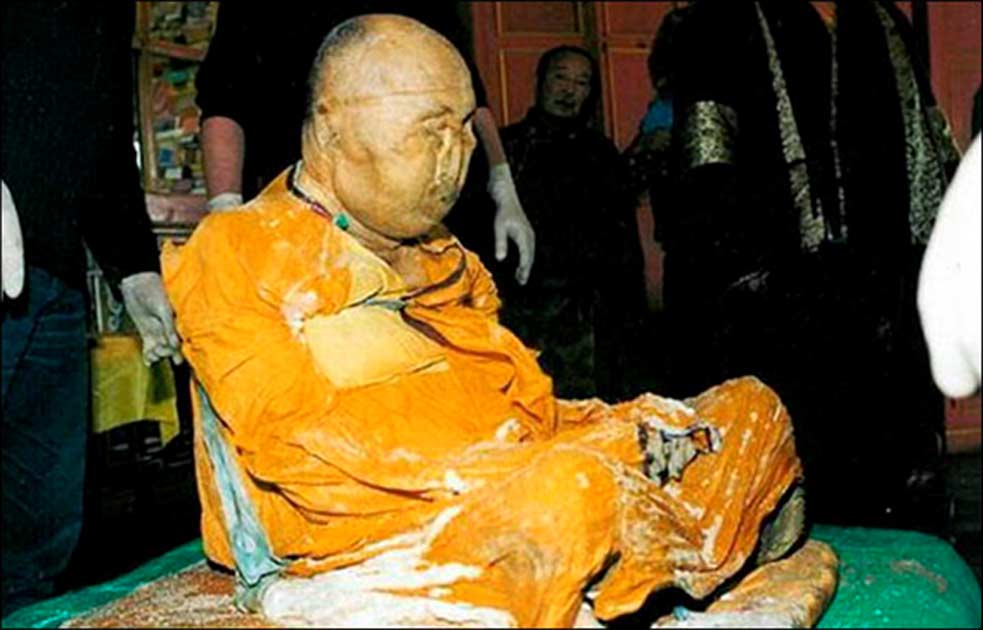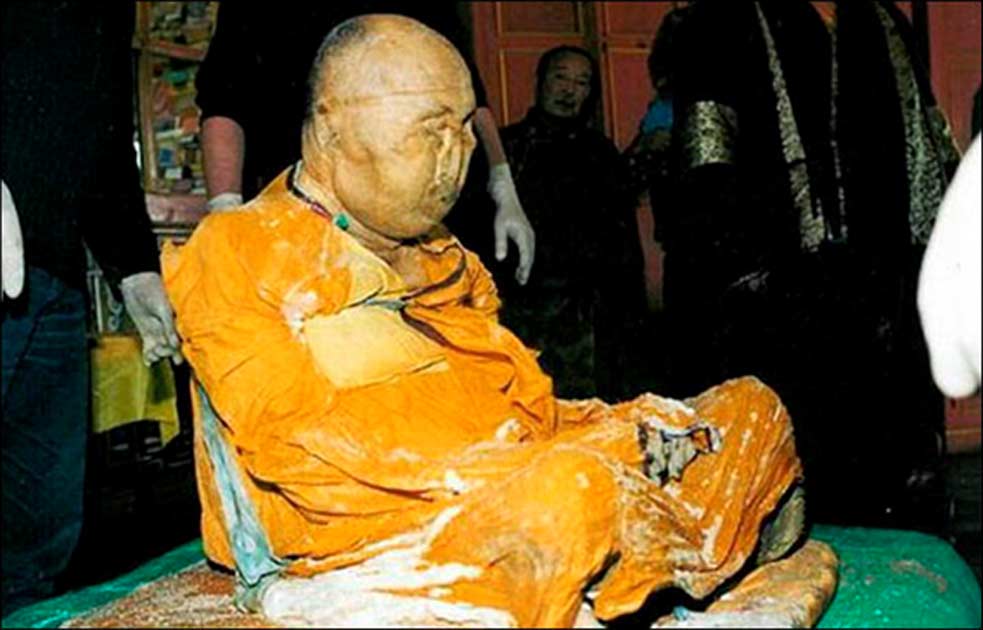

The remains of lama Itiligov in the Republic of Buryatia in Siberia are world famous because their exceptional preservation 79 years after his death seem to defy science. Some have long believed the lama remains alive in a nirvana-like state. Now lama Damba Ayusheev, current head of the Buddhist Traditional Sangha, has claimed two video images show the lama had moved inside his ‘palace’ Ivolginsky datsan, some 23 kilometres from regional capital Ulan-Ude.
One image shows a grainy figure in the foreground, while a second one, a day later, shows a similar figure close to or on a sofa.
Lama Ayusheev insists he is not joking and has dismissed claims that the CCTV footage shows a security man in fatigues, holding two plastic bags.

Lama Ayusheev insists he is not joking and has dismissed claims that the CCTV footage shows a security man in fatigues, holding two plastic bags Picture: Damba Ayusheev
‘This is not a joke, that’s for sure,’ he posted. ‘I see a figure of a man on the shot, as you do, and I know precisely there could not be anyone in the Palace of Khambo Lama Itigilov at this time.
‘There should be no-one there at 20.05.51. The lama is in five or six metres down the hall on his throne, and this place [where the man stands] is at the front door.’
He posted a second picture apparently showing lama Itiligov was on the move again, this time by the sofa. The images are poor quality and he has not released full footage but said: ‘There is no video, only a flash from the body on the shot.’
‘I was taken aback by this image, though somewhere in the depths of the mind I imagined such a possibility, but it still was not ready for this,’ said Lama Ayusheev.

The second image, a day later, shows a similar figure close to or on a sofa. Picture: Damba Ayusheev
A spokesman for the Buddhist Traditional Sangha of Russia, Tubden Baldanov, agree that Lama Itigelov had moved and added: ‘The fact that he appeared in camouflage … We do not know. Maybe it’s some kind of sign? Maybe he says something? Perhaps, that the international organisations should work on peace?’
In comments to Damba Ayushev’s posts in Facebook, people suggest it a security guard. Some agree that a moving lama dressed in camouflage is the sign of coming war.
Born in 1852, lama Itiligov was prominent in the spiritual life of tsarist Russia immediately before the Bolshevik Revolution.


Normally lama Itigilov sits inside the special glass sarcophagus located on the second floor of his ‘palace’. Picture: Vasily Tatarinov, Datsan Photoshare
He took part in the Tercentenary celebrations of the House of Romanov in 1913, and opened the Datsan Gunzechoinei, the first Buddhist temple in St Petersburg. Tsar Nicholas II invested with the Order of St. Stanislas 1917 shortly before his abdication.
The famous lama died in 1927, the year after warning Buddhist monks to leave the Soviet Union because they would be overwhelmed by ‘Red teaching’. His final request was to buried in the lotus position, in which he had died.
When his remains were examined in 1955 and again in 1973 the monks were astonished to note no signs of decay. They kept their knowledge hidden from the Soviet authorities.



The remains were found to be ‘in the condition of someone who had died 36 hours ago’, extraordinarily well preserved and without signs of decay. Picture: REN.tv, The Siberian Times
In September 2002, Itigilov’s body was exhumed once more in the presence of the leaders of the Buddhist Traditional Sangha of Russia. It was closely examined by monks as well as by scientists and pathologists.
The remains were found to be ‘in the condition of someone who had died 36 hours ago’, extraordinarily well preserved and without signs of decay. Muscles and inner tissue, soft joints and skin remained intact, according to accounts of the observations.
Some have claimed that the lama was preserved in salt. Others say he is in a state of hibernation, nirvana-like, and is in fact still alive.
Normally lama Itigilov sits inside the special glass sarcophagus located on the second floor of his ‘palace’.

Born in 1852, lama Itiligov was prominent in the spiritual life of tsarist Russia immediately before the Bolshevik Revolution. Picture: Sangha Russia